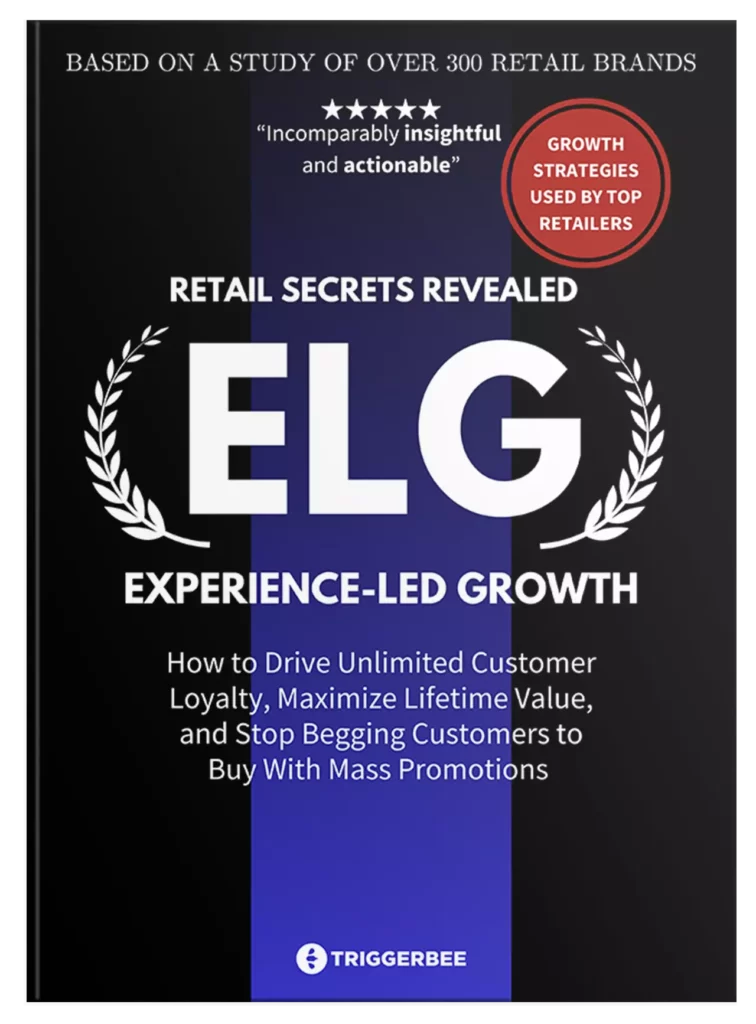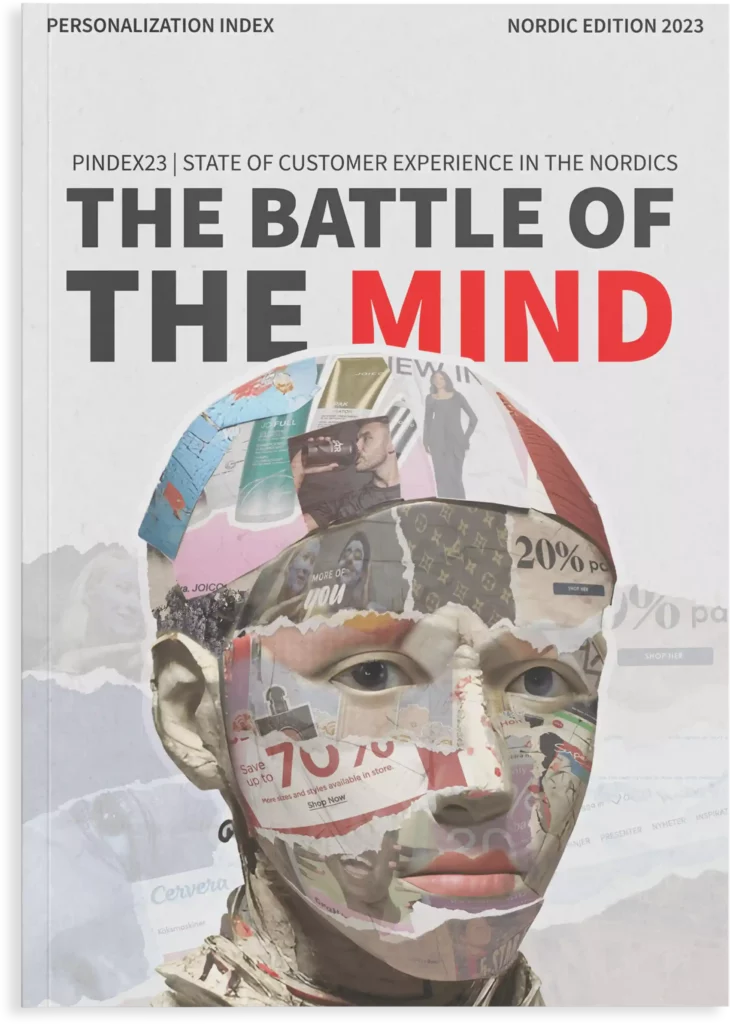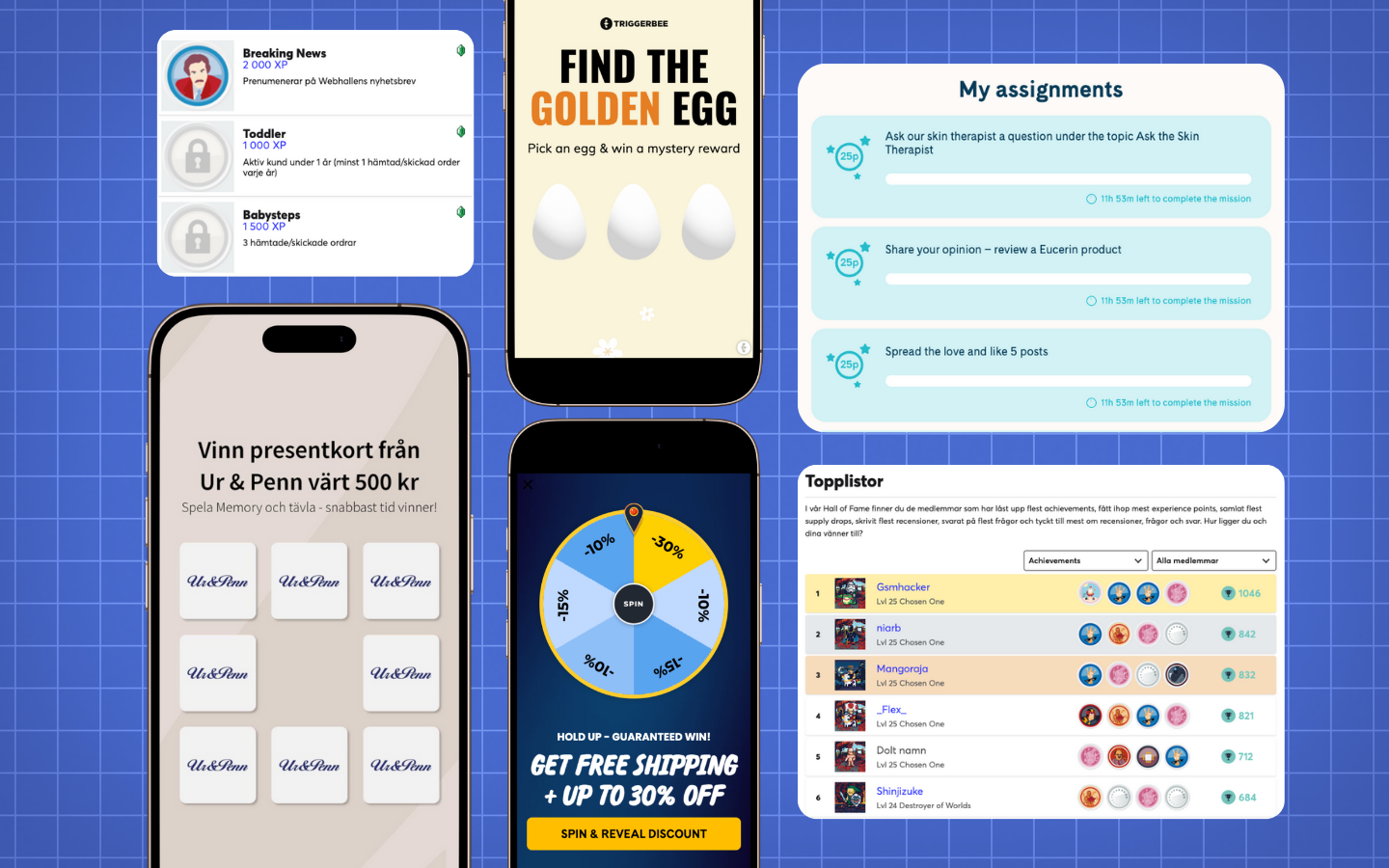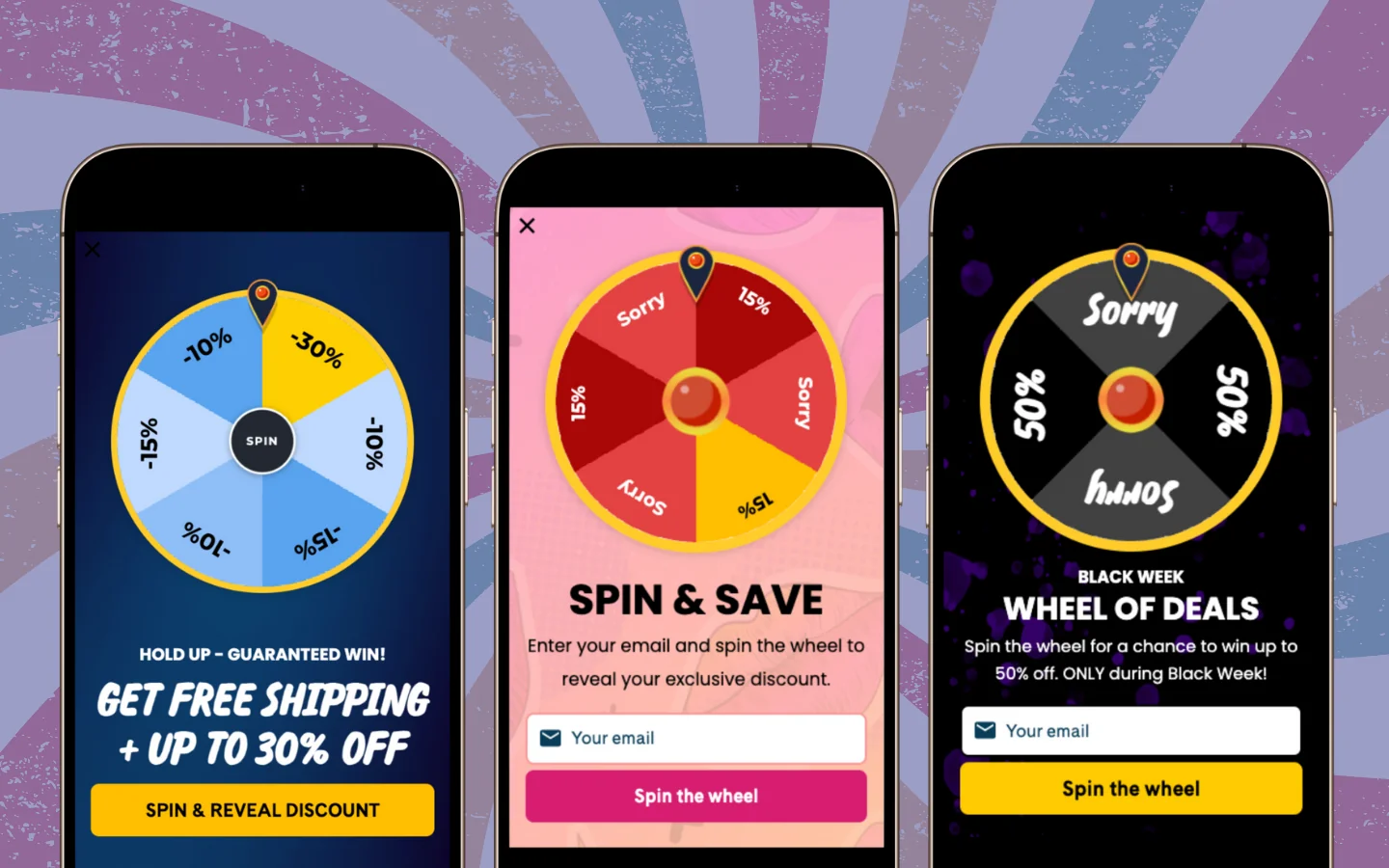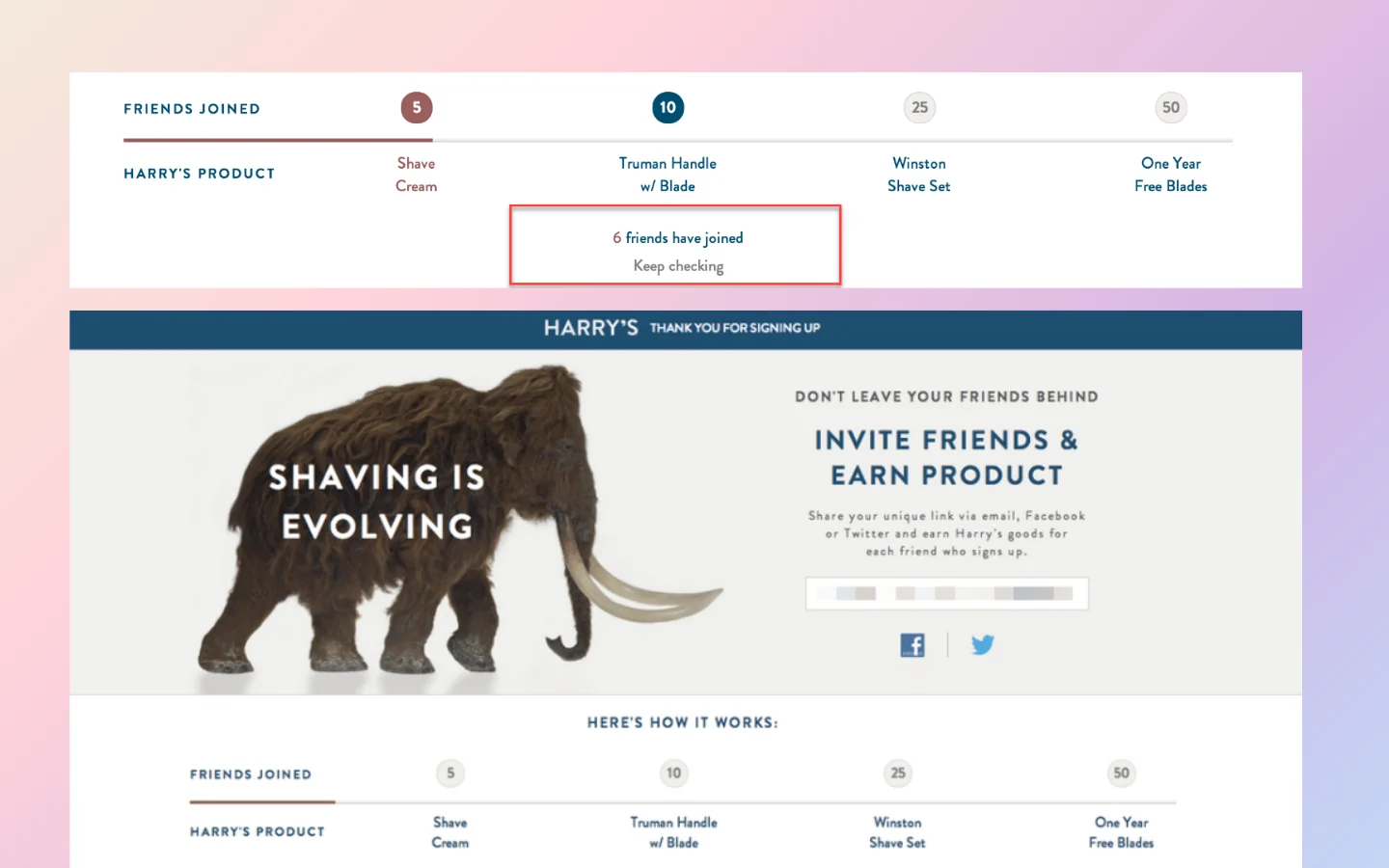What is gamification?
Gamification is one of those things you’ve seen a hundred times but might not think about. It’s everywhere. The idea of gamification is super simple. It’s to turn the regular, boring stuff into something people actually want to engage with.
How does gamification work
Gamification taps into core human psychology. People love progress. We love winning. And we really hate missing out.
- Progress and achievement. A progress bar, a tiered system, a leaderboard. When people see how far they’ve come, they are more motivated to continue.
- Curiosity and surprise. Spin to win popups. Scratch off discounts. Mystery rewards. People have to know what they’ll get.
- Loss aversion. Streaks, points, VIP tiers. Once you’ve earned something, you don’t want to lose it.
- Social proof and competition. Leaderboards. Referral challenges. Your friend just unlocked a reward. Can you keep up?
Examples of gamification in different industries
It’s not just e-commerce. Gamification works in any industry where you want people to stay engaged.
E-commerce gamification
Retail brands use gamification to make online shopping interactive. You can learn more about how to do this in our article about e-commerce gamification.
- Spin to win popups. Instead of just handing out a discount, your visitors get a chance to win one. It’s one of the most effective ways to build your email list.
- Tiered loyalty programs. The more you spend, the better the perks. And once someone reaches a high tier, they’ll keep spending just to stay there.
- Referral challenges. Invite friends, earn bigger rewards. First referral, free shipping. Three referrals, a gift. Ten referrals, VIP status.
Airlines
Airlines have been using gamification forever. Their secret is simple.
- Tiered status levels. Economy, Silver, Gold, Platinum. The more you fly, the better the perks. And once you reach a tier, you don’t want to drop back down.
- Mileage challenges. Fly a certain distance in a year to unlock rewards. It makes travel feel like a game.
- Points that expire. If you don’t use them, you lose them. It’s that simple.
Fitness apps
Apps like Strava, Nike Run Club, and Apple Fitness have made working out addictive. How?
- Streaks and badges. Run three times a week, and you get a badge. Work out every day, and your streak keeps climbing. Miss a day? Feels awful.
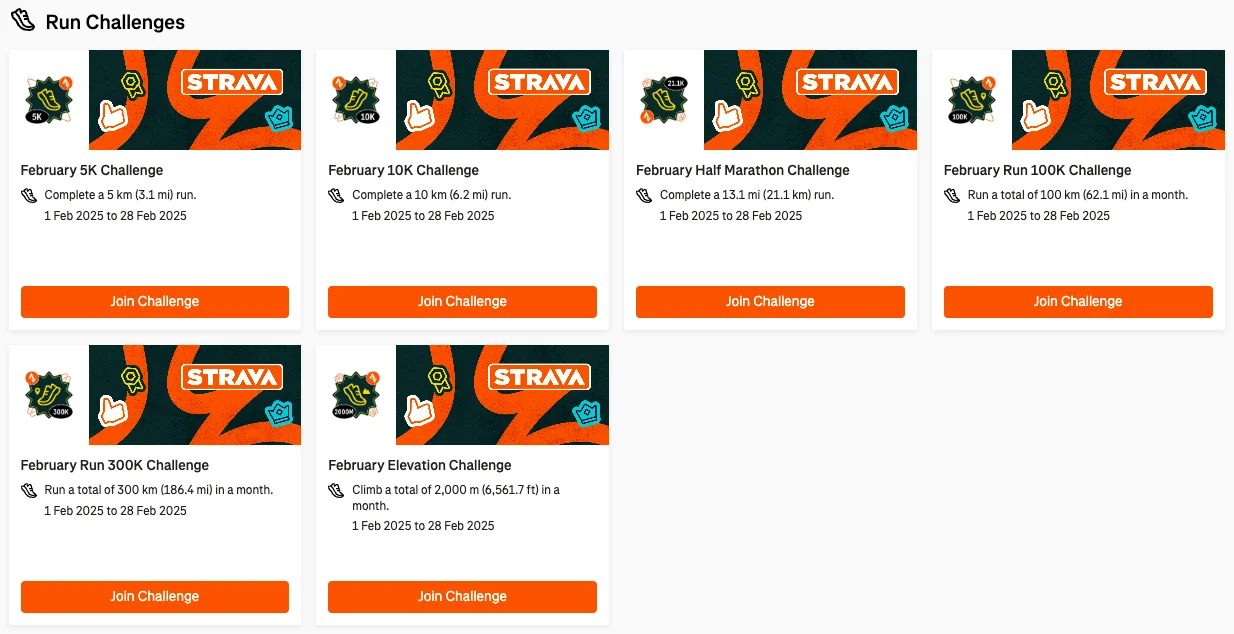
- Leaderboards and challenges. Compete against friends or the global community. The best part? Even casual users feel motivated just to stay on the board.
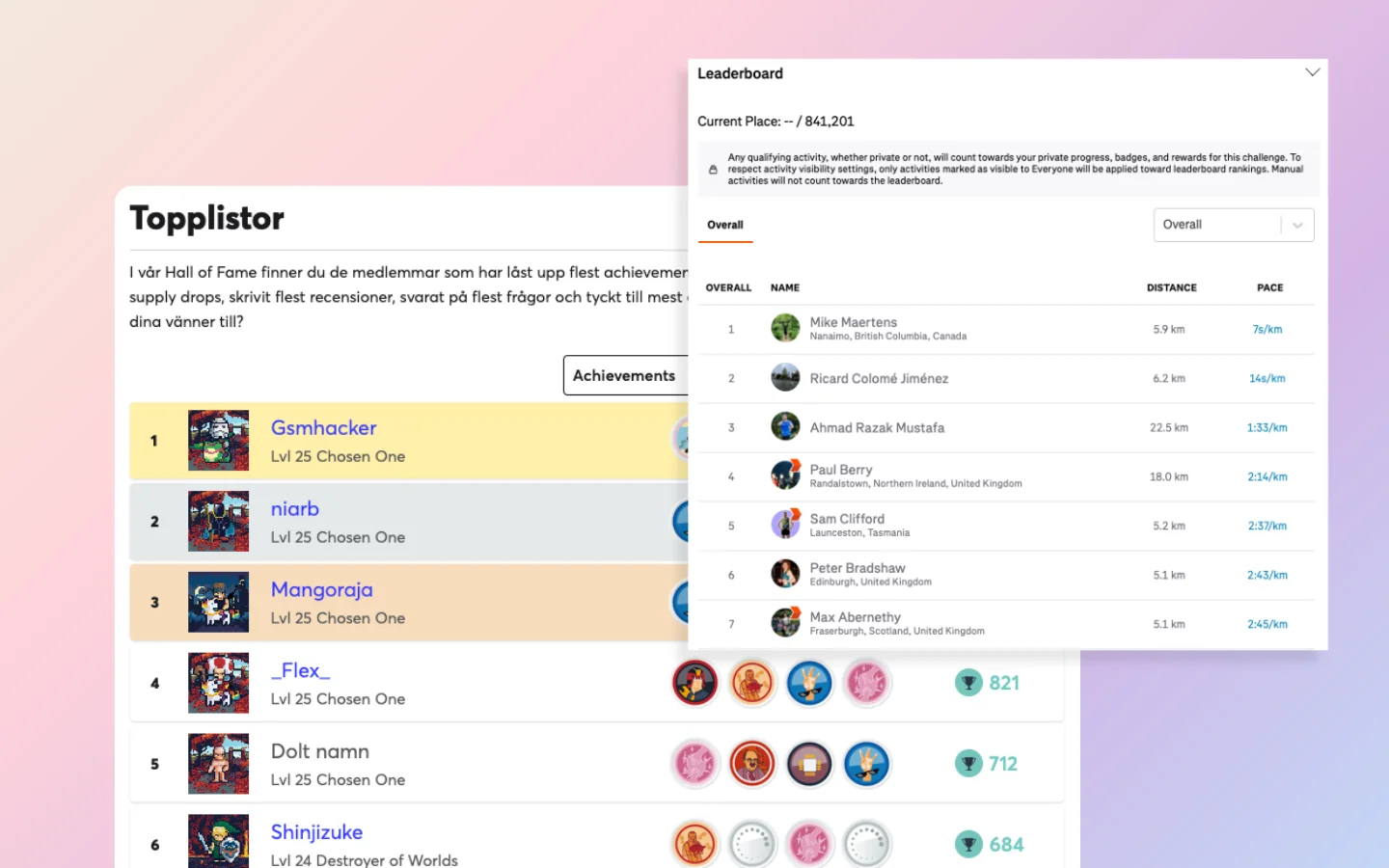
- VIP Tiers and progress bars. Seeing improvement, even if it’s in the same session, makes people come back for more
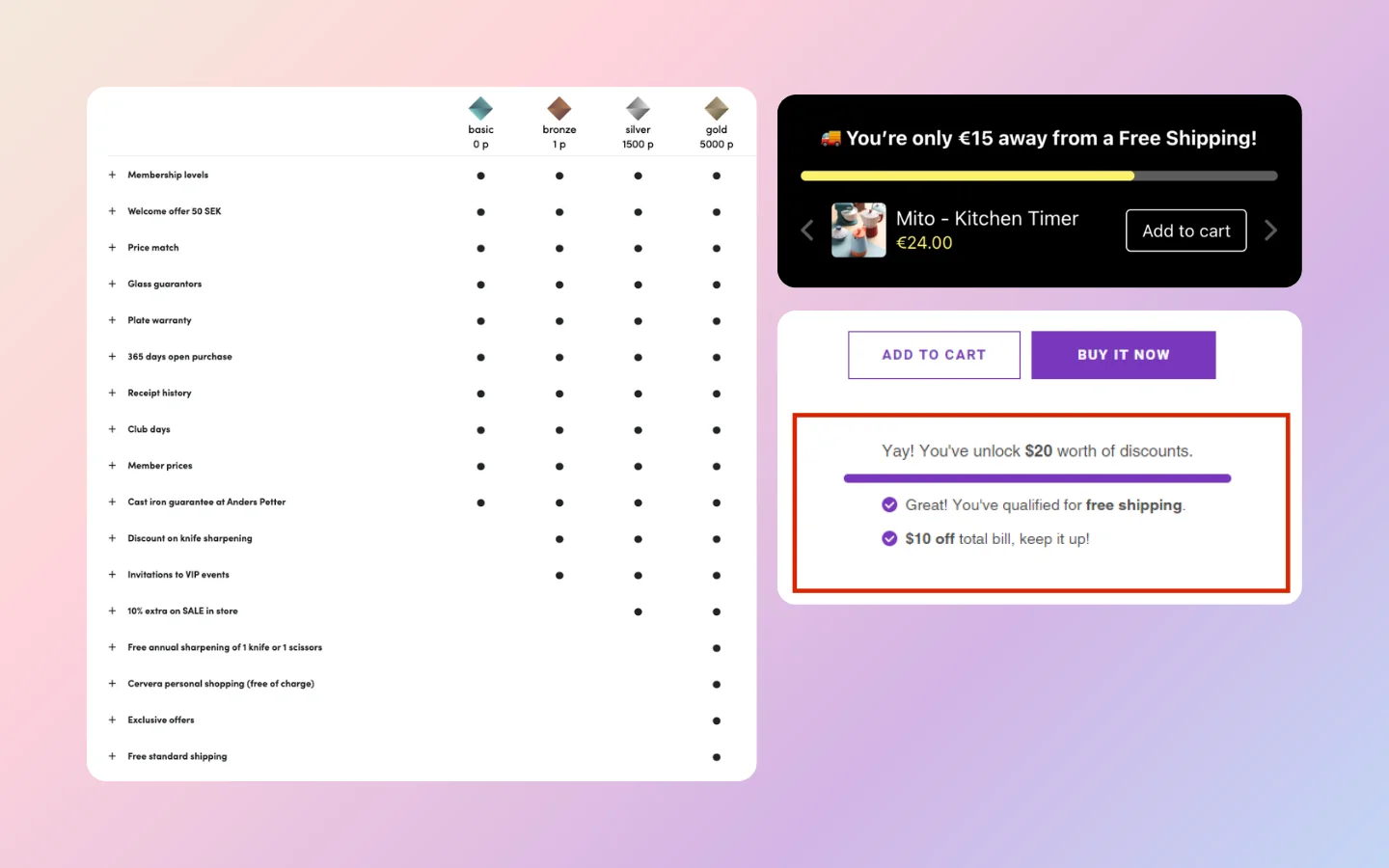
Best practices for gamification
- Keep it simple. If users have to think too hard about how to win, they’ll lose interest.
- Make progress visible. Show progress bars, levels, or streaks. Seeing growth keeps people engaged.
- Use real rewards. Nobody gets excited about 5 percent off. Give something valuable. Exclusive access, free shipping, VIP perks.
- Tap into loss aversion. Streaks, expiring points, limited time challenges. If there’s a risk of losing progress, people stay committed.
- Add surprise elements. Mystery rewards, spin the wheel discounts, random bonus points. Uncertainty makes the experience fun.
Tools that help you gamify
E-commerce
- Triggerbee. Personalized popups with gamification. Spin to win, memory games, calendar campaigns, and more.
- Smile.io. Loyalty programs with points, tiers, and VIP rewards.
- Gamifiera. Gamified loyalty programs that scale.
FAQ about gamification
Does gamification actually work?
Yes. When done right, it increases engagement, boosts retention, and drives conversions. Just look at airlines, fitness apps, and loyalty programs. Here is a case study of swedish auto brand Däckskiftarna who used a memory game which boosted their sign up rate by 250%.
Is gamification just for millennials and Gen Z?
Nope. It works on everyone. Airlines and hotels have been using status tiers forever. Grocery stores have been running stamp card programs for decades. Gamification is just human psychology at work.
What are the downsides of gamification?
Bad gamification feels forced. If rewards aren’t valuable or if the game feels like a trick, people will ignore it. Worse, if you take away progress too easily, like Snapchat’s broken streaks, users might just quit.
How do I start gamifying my business?
Start small. Add a progress bar to your checkout. Test a spin to win popup. Run a limited time leaderboard challenge. You don’t need to overhaul everything, just experiment and see what sticks.
